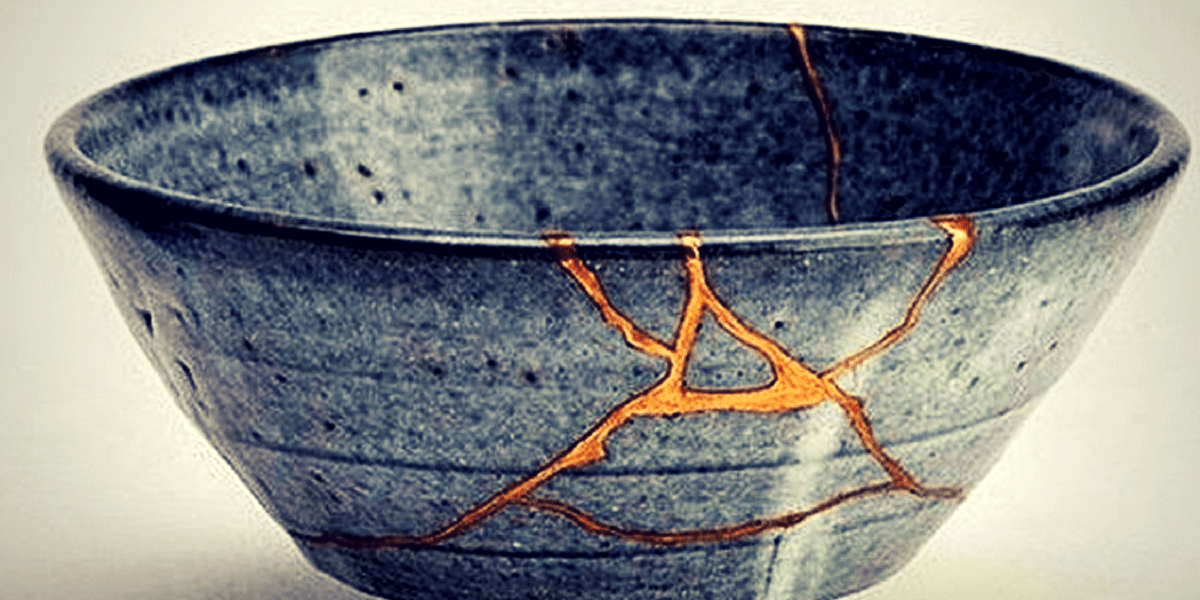Sitting With The Brokenness (More About Grief, Kintsugi and The Art of Precious Scars)
At that time, I was serving as a Hospice Chaplain/Bereavement Coordinator/Volunteer Coordinator at a small hospice. Part of my job was offering ongoing grief support for the Bereaved. Much of the curriculum that I came across was either trademarked, overly religious for the groups I was leading, or just full of empty platitudes. So I started creating some conversation-starters for support groups on my own.
Somewhere during this time, I learned about the Japanese art of Kintsugi, sometimes known as “the art of precious scars.” If you’re not familiar with Kintsugi, you can read my original post or Google Kintsugi yourself.
Somewhere during this time I also began working through the idea that we must explore what it means to carry our losses forward with us in life in emotionally healthy ways. Kintsugi is a perfect metaphor for this. The mended pieces are beautiful because of their journey through brokenness.
Since that time, I have transitioned to serving as a full-time Bereavement Counselor for a large hospice. Day after day I talk to people trying to work through the grieving process. I have talked to hundreds, if not thousands of people fumbling their way through the loss of a loved one.
And I keep coming back to the idea of Kintsugi being a perfect metaphor for what it might look like to carry our loss forward with us in emotionally healthy ways. I am reminded of a quote by Anne Roiphe: “Grief comes in two parts: the first is the loss, and the second is the re-making of life.”
I can’t remember where I came across a description of the process a Kintsugi master might go through when someone would bring a broken piece to them. They would spread the broken pieces out on a blanket and sit in front of them. They would just sit with the brokenness.
This feels unnatural. We want to hide our brokenness. We want to fix it. But grief is not a problem to be fixed. It is a process to go through. If grief is love for someone with nowhere left to go, then it is not a problem to be fixed. It’s natural to mourn and cry out that this isn’t the way things are supposed to be; to admit that things feel broken.
Grief comes in two parts: the loss and the re-making of life.
And when those Kintsugi masters would sit with the broken pieces, they were not just sitting with the brokenness, they would pick up the pieces, and feel them; trace the edges, and they would begin to envision what the piece might look like after it’s mended. How its brokenness would become part of its story in beautiful ways.
As we acknowledge our loss and brokenness, we must learn to not dwell on the past (the loss); we acknowledge it and its pain, but we set our sights towards an emotionally healthy future (the re-making of life.). This will look different for everyone but I believe that kintsugi can help us understand what it might look like to carry our loss forward with us in emotionally healthy ways.
Read the preface piece to this post: Grief, Kintsugi and The Art of Precious Scars


